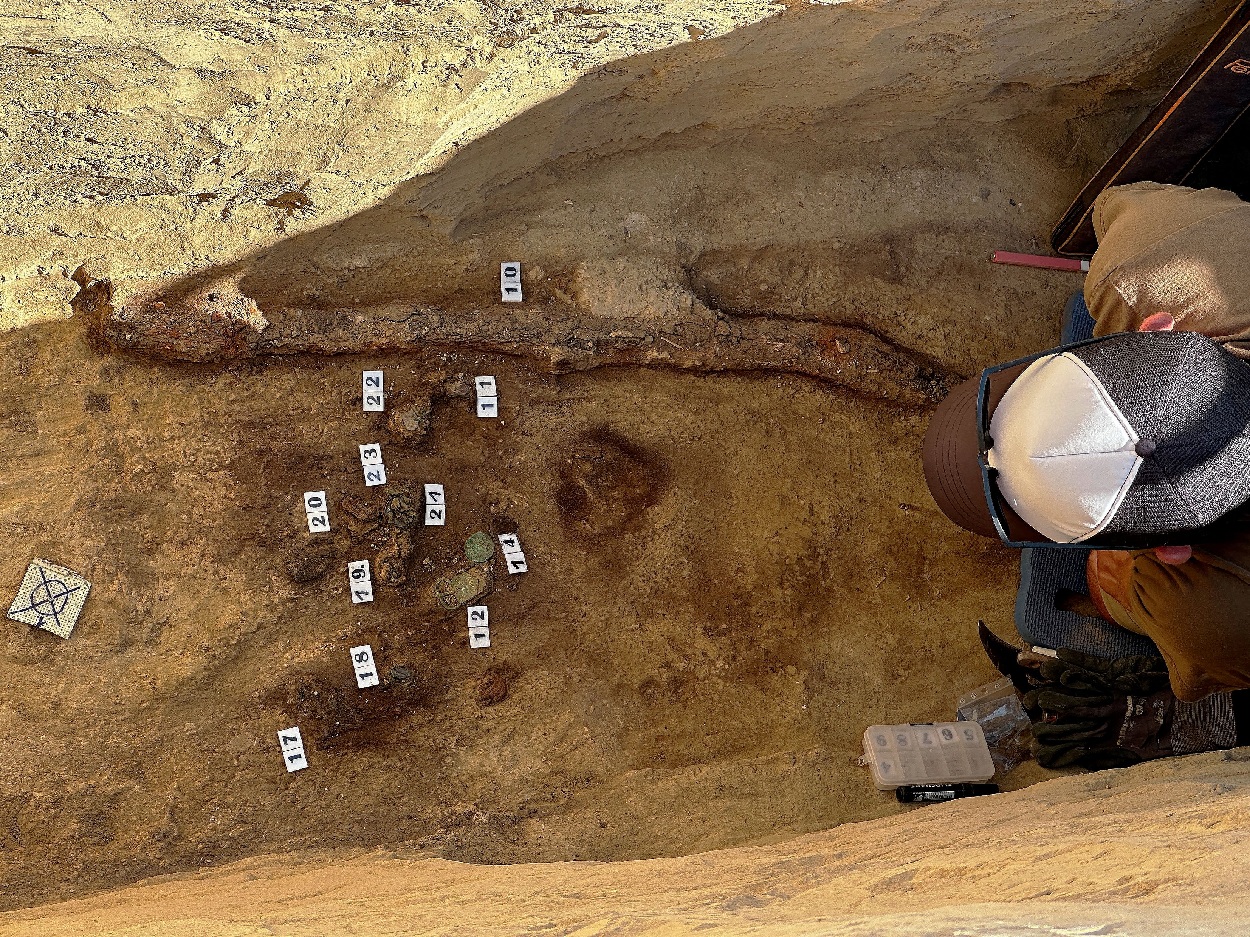Archaeologists from the Stephen King Museum have unearthed an Avar-era sabre during an excavation of a cemetery identified by the Hungarian National Museum’s Cemeteries from Space program.
The program is an archaeological research initiative that uses satellite imagery and aerial photography to locate previously unknown burial sites across Hungary.
This is achieved by identifying cropmarks that appear brighter or greener in satellite photos where the ground is disturbed by graves that retain more moisture, producing brighter and denser growth of crops or grass.
From one such image, archaeologist Frigyes Szücsi identified a large cemetery site with up to 500 burials and a smaller one nearby. Excavations began in August, and two graves were opened in the larger cemetery that have been dated to the Middle Avar period.
On August 25, the outline of a weapon appeared—an Avar sabre, an exceptionally rare find in Hungary and almost unheard of in Fejér County. The last similar discovery in the region was made in 1979 by the late archaeologist Gyula Fülöp at Kajászó-Újmajor.
According to Szücsi, Avar graves typically contain spears and bows. The presence of a sabre suggests that the individual buried was of higher social rank. Additional grave goods support this interpretation: gilded bronze hair braids and a decorated bronze belt, which in Avar culture were clear indicators of status and authority.
Extracting the sabre was no simple task. The corroded weapon risked crumbling upon removal, so it was carefully lifted with the surrounding soil on a specially crafted wooden pallet, provided by volunteer carpenter László Teker.
The sabre will now undergo conservation at a restoration workshop, where specialists will work to stabilize and preserve the weapon. The need for such careful handling is heightened by modern agricultural chemicals, which accelerate the deterioration of buried metal objects.
Szücsi emphasised that Fejér County still holds vast untapped archaeological potential. Roughly 80 unexplored but satellite-identified sites remain in the region. If further surveys confirm their Avar origins, they could provide invaluable material for understanding the settlement patterns and social structures of the period.
Historian György Szabados, who visited the excavation, highlighted the broader significance: “These cemeteries prove that Fejér County was an important center 1,400 years ago.” The sabre discovery adds weight to that claim, offering both a tangible artifact and a symbol of the region’s place in early medieval history.
Header Image Credit : King Stephen Museum
Sources : King Stephen Museum





